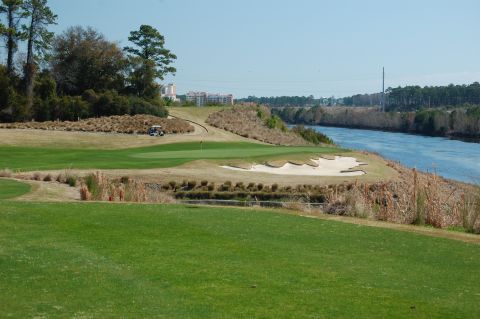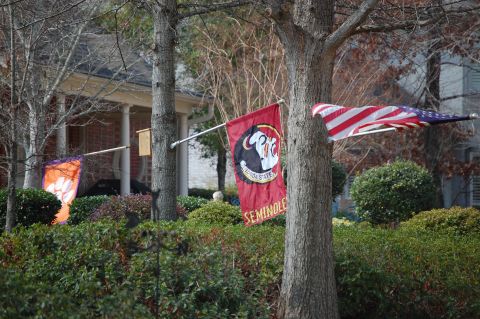The extreme heat of the summer scared away many golfers, but the beach traffic helped make up for the lost revenue and kept the restaurants and area’s sprawling outlet malls busy. One summer-time golf event, however, has continued to attract hundreds of golfers for three days in July, in good economic times and bad. The Father & Son Team Classic will run from July 21 to 23 this year and, once again, the event organizers are expecting more than 1,000 golfers; last year, the smallest field ever still reached 530 two-man teams, one of the reasons that summer has been the only season in Myrtle Beach that has actually shown an increase in golf rounds played the last few years. Although the entry fee may seem pricey at $1,175 per two-man team ($950 if you have played in the event before), competitors receive an ample array of freebies. For the winners and many others, though, the memories can be priceless.

Some participants at the Father & Son Classic will have the chance to try the testing 190-yard par 3 14th at the Grande Dunes Resort course. The Grande Dunes Members course is also in the Father & Son rotation.
Teams comprise fathers and sons, grandfathers and grandsons, stepfathers and stepsons, fathers and sons-in-law, and even uncles and nephews. Relationships are tested during the competition, especially on day two, when an alternate shot format has been known to create a few sharp looks and comments. The other two days, the format is the milder best ball and scramble (captain’s choice), a lot more fun if not as stern a test of a team's mettle. Teams are placed into flights based on their combined handicaps (all competitors play at 80% of their USGA handicap).
The roster of more than a dozen courses that host the event is impressive and includes the Barefoot Resort, the resort and private clubs at Grande Dunes, the Thistle Club, Founders Club and the three courses at The Legends Resort.
For the entry fee, each team receives a nice lineup of extras, including $200 in gift certificates to Golf Dimensions, a local golf superstore; an additional $200 in merchandise from Titleist and FootJoy; lunch at the golf course each day; a closing-day cookout before the awards ceremony; and a shirt and hat. Of course, the entry fee includes all golf and cart fees.
Afternoons are free during the Father & Son Golf Classic, and with Myrtle Beach area real estate prices at their lowest in 10 years, you might consider taking a couple of hours to look for a potential vacation golf home. I know the Myrtle Beach area as well as any others and would be pleased to answer any questions about specific golf communities along the Grand Strand. Contact me if you would like more information.
For more information about the Father & Son Golf Classic, go to FatherSonGolf.com.
























